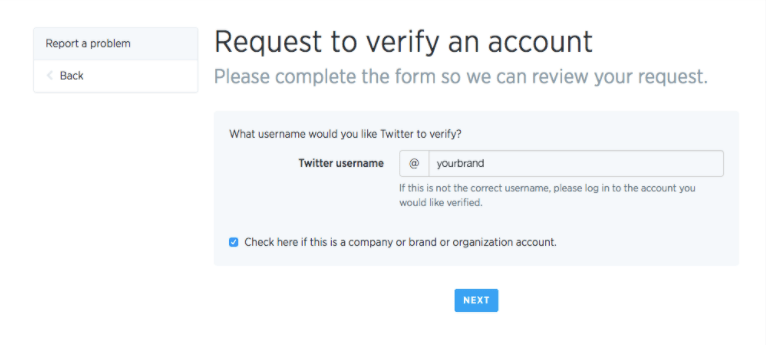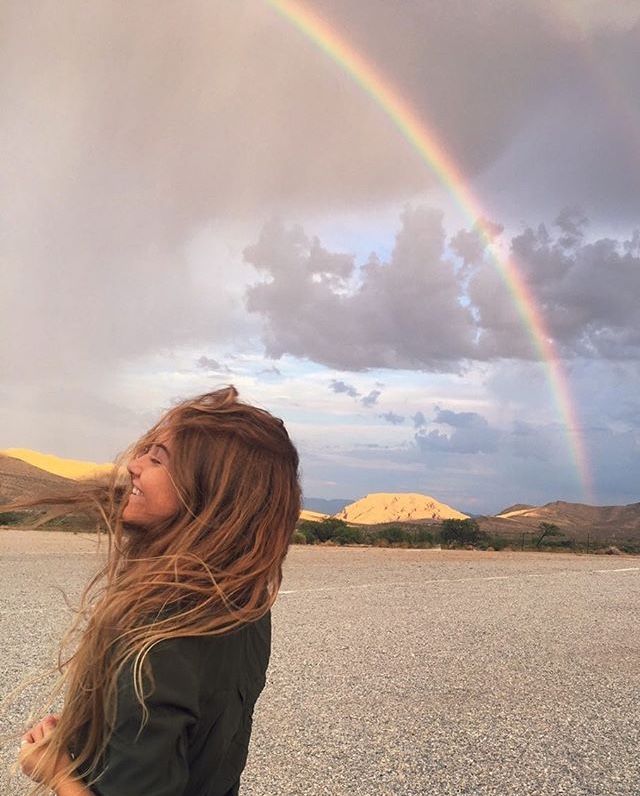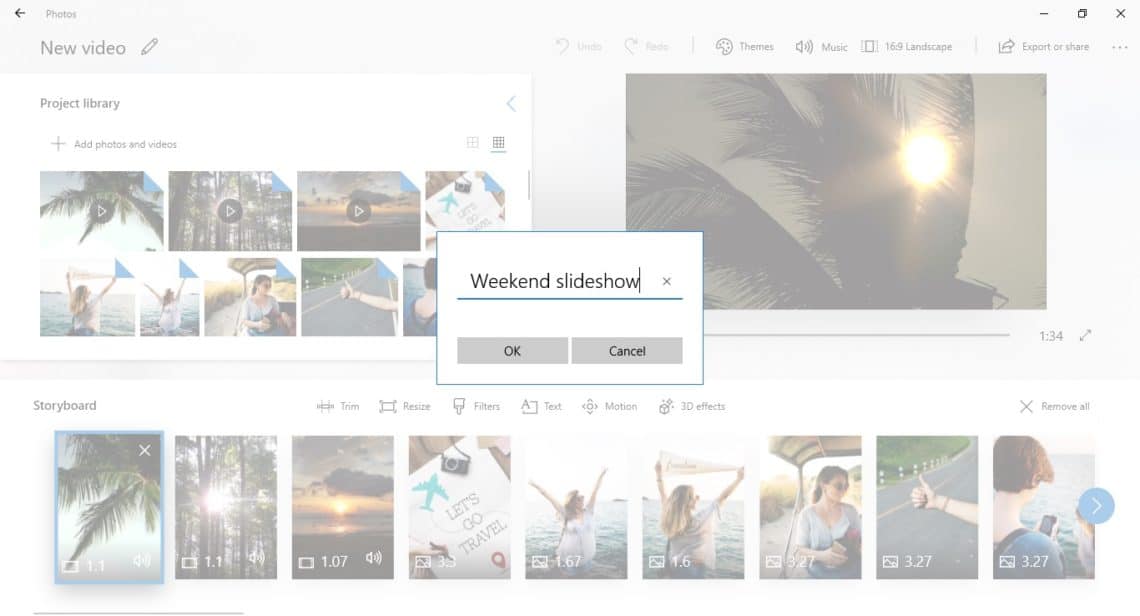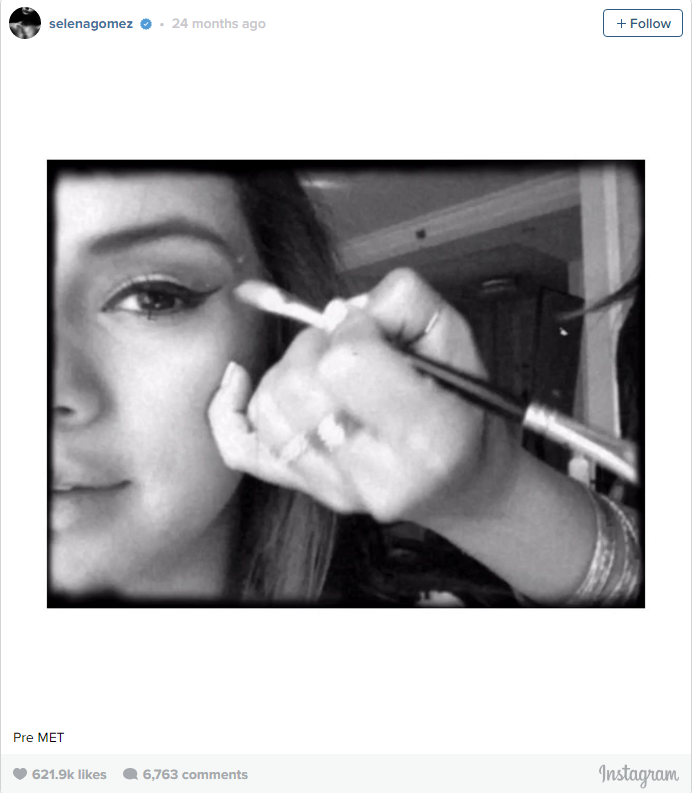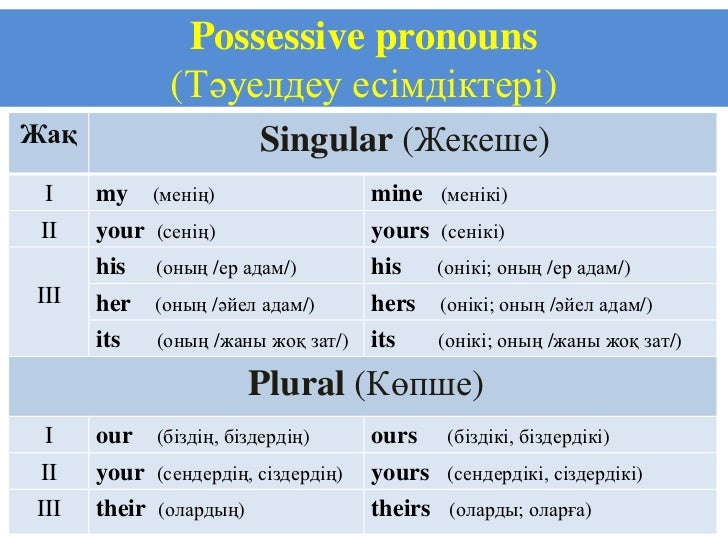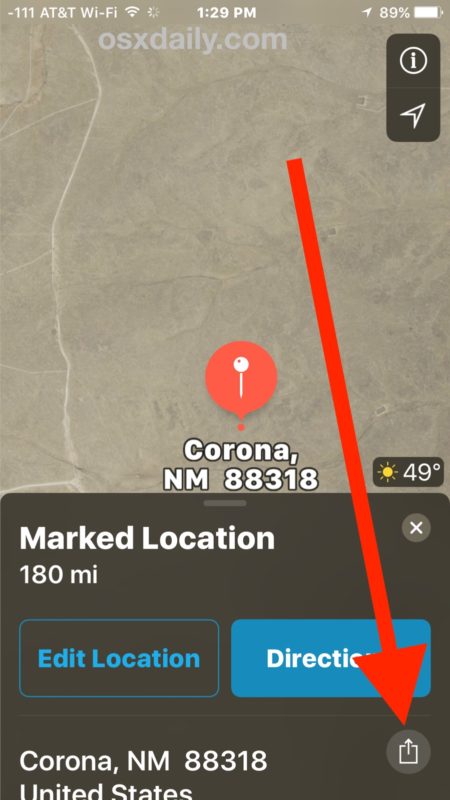How to use instagram hashtags for maximum exposure
How to Use Instagram Hashtags for Exposure (8 Powerful Ways)
Instagram is at the top of the social media food chain, and every IG ninja knows that hashtags are the real deal.
Hashtags can make or break your exposure on Instagram; they are that powerful. If you want to stop being invisible on Instagram, you must learn how to use Instagram hashtags properly – and to be honest, it’s not that hard.
All you need to do is learn the basics, add a little bit of creativity, and voila! You will start seeing the growth you crave.
Unfortunately, many don’t know how to leverage hashtags for better exposure– they just sprinkle random or popular hashtags at posts and pray it triggers engagements. But sadly, it doesn’t work like that.
Every Tom, Dick, and Harry would have millions of likes and comments on every post if it did.
This naivety is why new brands find it challenging to establish a presence on Instagram and struggle to stay afloat in the pool of competition.
Many questions surround the use of hashtags on Instagram, but don’t worry; this article will answer those questions.
Why are hashtags so important anyway? Aren’t they just words?
Hashtags are words preceded with the # sign, but they are a whole lot more. If they weren’t vital, no one would bother about them, and they’d be lost in the horde of social media elements.
Here are some of the reasons why hashtags are vital in promoting your Instagram account.
Exposure Exposure Exposure
Hashtags literally bring your content into the limelight.
Let’s assume the hashtag #dresslikeaqueen is trending in the fashion world, with dozens of designer fashion brands like Louis Vuitton, Fendy, and Chanel using it to promote their designs.
Of course, millions of customers will search for that particular hashtag to check out what it’s all about.
Now imagine adding that exact hashtag to one of your posts. That translates to millions of people potentially discovering your content. Isn’t that just amazing?
Isn’t that just amazing?
They boost audience interactions.
The mere fact that Instagram users consciously search and click on hashtags should tell you that they rate hashtags a lot. And when they do find attractive posts with hashtags, they tend to comment and interact with them.
Sometimes, brands create custom hashtags for their products and feature clients that use such hashtags on their pages. Using such hashtags, you may find yourself in a pool of interactions, especially if your posts are of top-tier quality.
Hashtags may help you discover the latest industry trends
The world is a highly dynamic place, with new trends popping up every now and then. It can be pretty difficult to keep up with these trends – well, only if you don’t know how to utilize hashtags.
All you have to do is check the buzzing hashtags, and who knows, you just might discover your next big break.
For instance, if you check the dropshipping hashtag on Instagram, you will quickly realize that it’s an evergreen trend.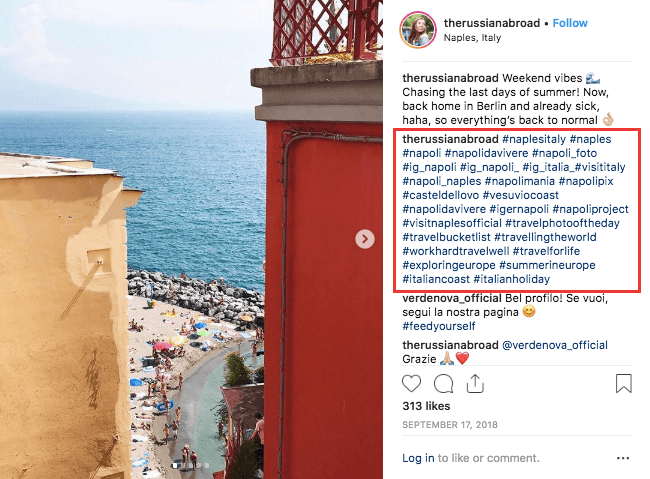 The hashtag alone has amassed over 1.5 million posts. So if you have a post related to dropshipping, you surely want to include the hashtag.
The hashtag alone has amassed over 1.5 million posts. So if you have a post related to dropshipping, you surely want to include the hashtag.
How Do I Utilize Hashtags to Promote my Content?
Now that you understand the prowess of hashtags, the next line of action is to apply them. But before that, there’s a lot to learn- including knowing where to use your hashtags.
Places where you can use hashtags on Instagram
Instagram Feeds
This is your main profile page, and everything you post here stays there basically forever – except you delete them. Here, you can use up to 30 targeted hashtags in the caption or comment section.
This means that millions of people can locate your page via 30 different hashtags for every Instagram post you make. Please do your research, pick the best of the bunch (preferably between 10 and 15), and use them.
Instagram Stories
Instagram Stories is a feature that allows users to post content that vanishes after 24 hours.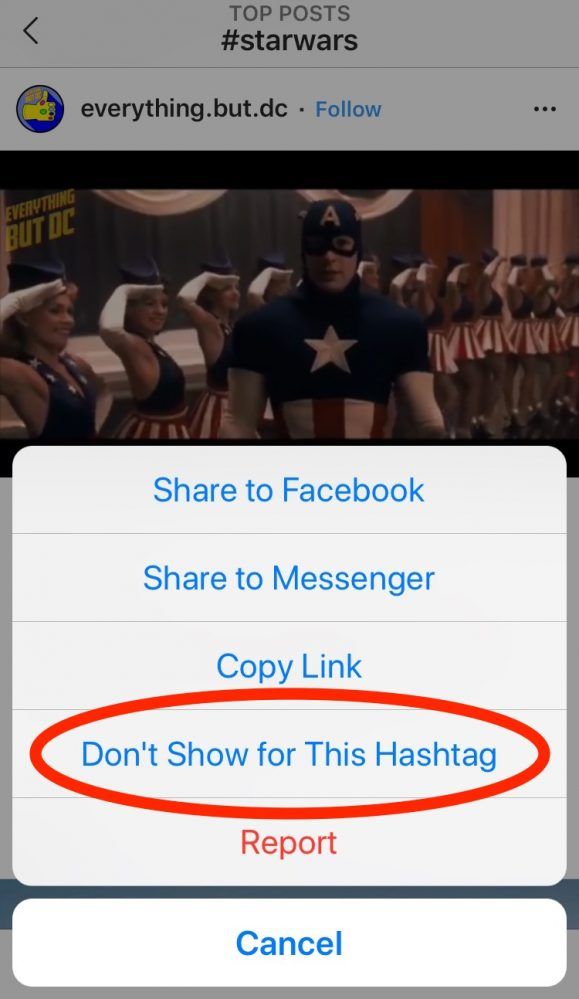 These posts will be visible to your followers and some people you follow, but to boost your chances of exposure, you can add hashtags to the mix.
These posts will be visible to your followers and some people you follow, but to boost your chances of exposure, you can add hashtags to the mix.
Here, you can use only three hashtags in a text box and one as a sticker. Using hashtags on stories will significantly boost your views – which means exposure for your content/brand.
IGTV
IGTV is an autonomous video app developed by Instagram to allow users to post longer videos (up to 10 minutes for regular accounts and 1 hour for large or verified accounts).
People often use this feature to share exclusive content, broadcast main events and shows, deliver tutorial videos, or publish episodes of content relating to their brand – and so can you.
IGTV allows up to 30 hashtags per video – a massive opportunity to showcase your content or brand to the world.
How Do I Find the Best Hashtags in my Niche?
It would be out of place and quite unprofessional to use an energy drink hashtag in a clothing brand post.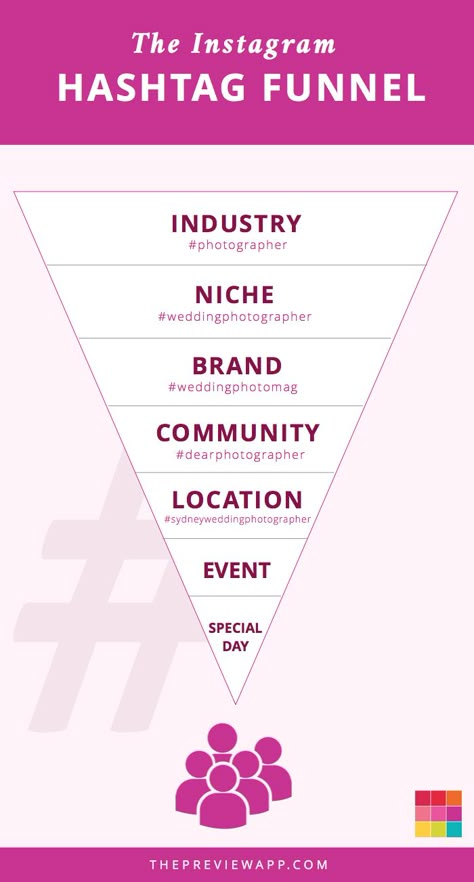 Avoid doing this at all costs. There are way better hashtags to use. All you need to do is find them.
Avoid doing this at all costs. There are way better hashtags to use. All you need to do is find them.
Check out posts from other brands in your industry.
One of the best ways to discover traffic-generating hashtags is to take a look at the posts of your competitors and superiors in the industry.
Some may see this as lazy and unethical, but please – it’s not like they invented all those hashtags.
It is perfectly fine for you to take a cover from their books – in this case, hashtags from their posts – and use it in yours.
If those hashtags generate engagements for your competitors and superiors, you can expect that they will have the same effect on your posts.
Research the hashtags industry influencers are using.
Like Elon Musk to Cryptocurrency, Coles Sprouse to fashion, and Soccerbible to football, every industry has influencers or leading figures that drive discussions and create trends.
They often create or use hashtags that everyone interested in that niche responds to, and this is why you must find out what hashtags these top Instagram influencers are currently using.
You can do this by searching for a generic word like football in the search tab – you will find a boatload of posts using that particular word as hashtags.
Scroll through and locate the prominent accounts, then check the other hashtags they use. And just like that, you can find the hashtags that will push your content to possible stardom.
Pro tip: Ensure that the hashtags from these sources don’t have multiple interpretations that may confuse your target audience.
Brainstorm
Never underestimate the power of brainstorming, especially when it comes to stuff relating to your niche.
You’re the expert, and your journey in the industry must have exposed you to some knowledge. Use this knowledge to generate simple but effective hashtags that will drive engagements.
Pro tip: Search Instagram and other social media platforms to check if your hashtags have been used before.
If they haven’t been used, that means they are new, and you may have to modify them – especially if your brand is just rising in the ranks. Only established brands have a higher chance of success when it comes to inventing new hashtags.
Only established brands have a higher chance of success when it comes to inventing new hashtags.
Lastly, you can take advantage of Instagram hashtag generators like Hashtagsforlikes, Kicksta, and Ingramer.
Recommended Instagram Hashtag Tool: HashtagFox
8 Ways to Use your Instagram Hashtags for More Exposure
Learning how to use Instagram hashtags for more exposure is vital to your Instagram growth; these tips should help.
1. Complement your Insta Stories with hashtags
Yes, this has been mentioned before, but I am reiterating it to highlight just how vital it is.
Many brands fail to utilize the vast potential that comes with using hashtags in Instagram stories. They basically boost your exposure and push your content to more people.
Major brands like Nike, Fendy, Hublot – and the likes have perfectly mastered the art of using hashtags in Insta Stories – so should you.
2. Encourage your followers to use your hashtags
Sometimes, all it takes to get people to do something is to tell them.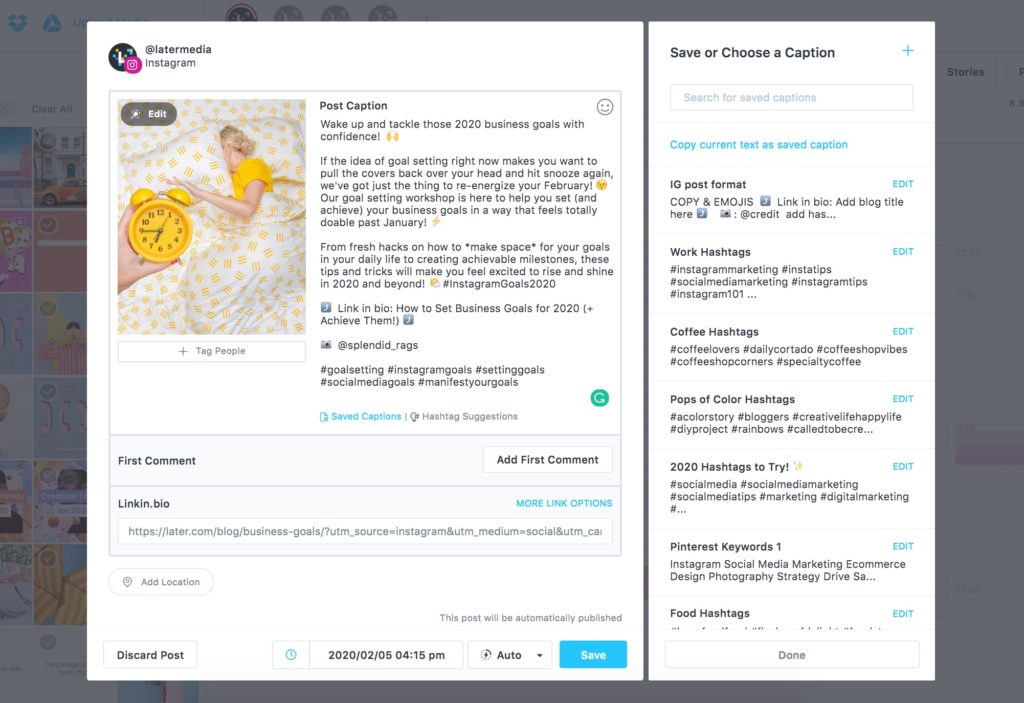 You can apply this logic by explicitly asking your followers and prospective audience to use a hashtag or a set of hashtags in their posts.
You can apply this logic by explicitly asking your followers and prospective audience to use a hashtag or a set of hashtags in their posts.
Think of it as a friendly call to action. You can throw in little incentives like mercs or shout-outs on our page. And you definitely should use power words to entice them further.
This will encourage existing followers to use your hashtags a lot more, thereby driving exposure for your content.
3. Stay away from Banned Hashtags.
Hashtags are incredible and all, but some of them are bad news. Hashtags get banned after multiple reports of bot spamming, abuse, association with inappropriate content, and basically anything that goes against the Instagram rules.
Posts with such hashtags become invisible to the Instagram community – they are hidden from the mainstream Instagram Feeds – and no one wants that because it would look like your post doesn’t even exist.
Plus, using too many banned hashtags concurrently may cause Instagram to flag or shadowban your account.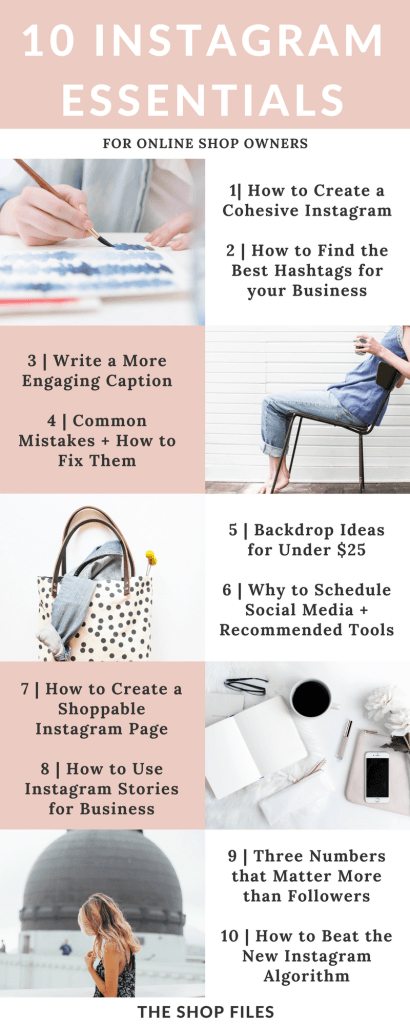 In some cases, you may permanently lose the account. There’s no official list of banned hashtags, but know that there are probably thousands of them.
In some cases, you may permanently lose the account. There’s no official list of banned hashtags, but know that there are probably thousands of them.
Banned hashtags are why you must research your hashtags properly before using them in your posts. To check if a hashtag has been flagged, head to the Explore tab, type in the hashtag in context and click on search.
If it is a banned hashtag, you will see this message above the posts, “Recent posts for this hashtag are hidden because some posts may not follow Instagram’s Community Guidelines.”
If you’ve noticed a dip in your engagements, you might be using at least one banned hashtag repeatedly. Edit such posts, find the banned hashtag and delete it.
This is a hashtag trick that many don’t know about. Posting your hashtags in the comment section rather than the caption makes your post look less bulky and unattractive.
It allows readers to focus on your post and caption instead of a horde of hashtags.
5. Leverage Trending Hashtags
Hashtags and trends are like bread and jam – they combine perfectly to give a satisfying outcome. Sometimes, hashtags may act as trends.
Almost every activity or movement on social media today comes with a hashtag – think of them as channels to exposure, especially when they start to garner attention on the internet space.
Leveraging trending hashtags is not a cakewalk, but it isn’t exactly rocket science – all you have to do is find the trending hashtags on the pages of leading figures in your niche and use them in your posts – that’s all.
A trending hashtag is your ride to exposure – one you cannot afford to miss. But just like a boat won’t take you to space, not every trending hashtag will take you to exposure.
You must choose hashtags that represent your niche, brand, or goals, or else your content will end up on the screens of audiences that can’t relate to it.
6. Avoid Using Repetitive Hashtags
Laziness gets even the best of us, and you may find yourself using the same old hashtags on every post.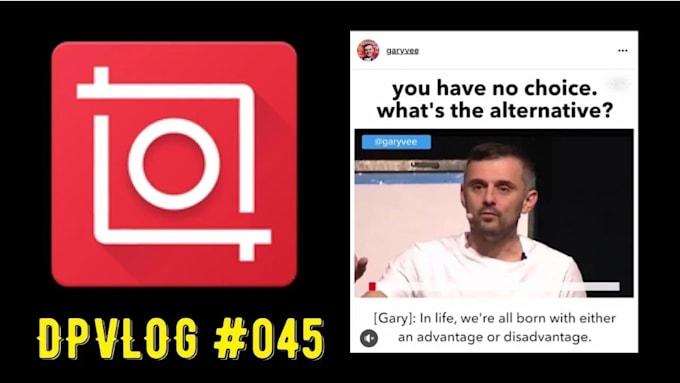 In simple terms, this is wrong – at least according to Instagram’s community guidelines.
In simple terms, this is wrong – at least according to Instagram’s community guidelines.
The rules clearly state that posting repetitive content or comments, which may include hashtags, is wrong.
And you must do well to avoid being culpable. If you do this, the algorithm may flag your account as a spam station and therefore restrict the publicity of your content.
Repetition is a typical Instagram hashtag mistake, but now you know better. Always try to use new and relevant hashtags on all your posts – it makes your content unique and in sync.
7. Hashtags should always match your Instagram Posts
This point is a close cousin to the last one – and you will do well to stick to both. There’s hardly any one-size-fits-all when it comes to hashtags. So, always create unique and specific hashtags for your posts.
Repeating the same hashtags will not only alert the algorithm of possible spamming activity, but sometimes, such hashtags do not relate to the post in any way.
Imagine posting French fries but using hashtags like #burgerislife #pretzelsarethebomb, and #pizzalover – there’s absolutely no correlation.
Yes, your content may pop up in the timeline of IG users searching for content on those hashtags, but when they do find your posts, they may be disappointed and most likely will not engage it.
When it comes to hashtags, it is never about exposure to a lot of people. It is about exposure to the right audience, and using relevant hashtags on your posts makes sure of that.
Another thing worth doing is creating posts that awe readers, then add powerful hashtags to them. This way, you can have viral content. Because according to a stat, content that awe readers have a 34% chance of going viral. Adding hashtags to this type of content will increase the likelihood of making them viral.
8. Create Hashtags for your Business
Have you thought about branding your business with a custom hashtag? If you haven’t, then you definitely should.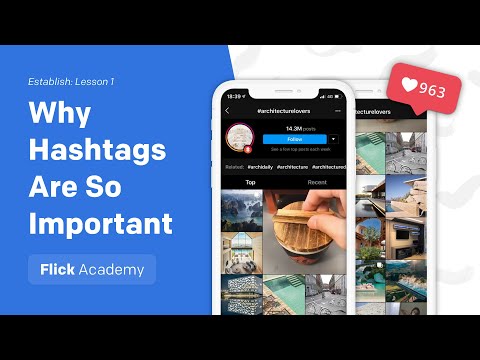
Yes, it might be challenging to get a large audience to notice it first, but in combination with other generic hashtags, your audience will start to see a correlation. And before you know it, your custom hashtag is a symbol of your business.
Your brand hashtag should be catchy, relatively short, and must also relate to your business.
You can always add a little bit of humor, sarcasm, or fun elements that social media users love to feed on. Before you know it, everyone will be wondering, “Who came up with this hashtag?”
Conclusion
Instagram is an online jungle and knowing how to use Instagram hashtags makes you an apex predator.
Deploying the ideal hashtags will keep your content and page visible to millions of followers and prospective customers – all you have to do is understand the basics and avoid making mistakes that may affect your account.
Using Instagram hashtags the right way could lead to more Instagram likes, comments, followers, and improve the overall engagements.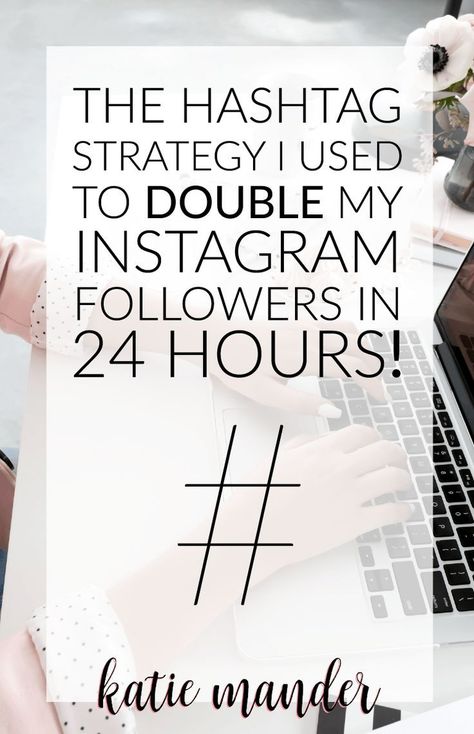 It is a way of optimizing your Instagram marketing similar to choosing the best time to post on Instagram for maximum engagement but much more powerful as you can see from this article.
It is a way of optimizing your Instagram marketing similar to choosing the best time to post on Instagram for maximum engagement but much more powerful as you can see from this article.
Author Bio
This guest post was written by Olusola David. Olusola is the founder and CEO of Torchbankz.com, an eCommerce entrepreneur and blogger with keen interest in eCommerce. After starting his online business journey with Dropshipping, he now shares his trial and error experience of many years with new aspiring entrepreneurs. He writes about eCommerce, from starting a Shopify dropshipping store to building a sales funnel for your business.
Hero photo by Jan Baborák on Unsplash
How To Use Instagram Hashtags FAQs
How do you use hashtags effectively?
Here are the ways to use hashtags effectively:
1. Use hashtags in your Instagram stories
2. Encourage your followers to use your hashtags
3.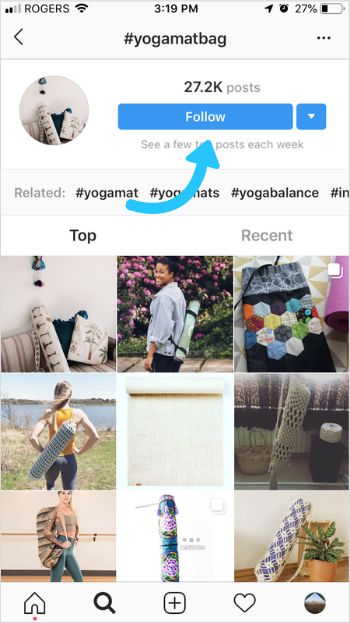 Make sure the hashtags you are using are not banned
Make sure the hashtags you are using are not banned
4. Use hashtags in your first comment
5. Always use trending hashtags
6. Avoid repetitive hashtags
7. Create hashtag specific for your business
What is a hashtag and how do you use it?
Hashtags are relevant words or keywords that are preceded with # sign. They are used to categorize all posts using the same hashtags. In this way, user will be able to easily find content relevant to the hashtag. On Instagram, hashtags are usually placed below the caption of the photo/video although it can be included anywhere on the post.
Do Instagram hashtags actually work?
Yes, Instagram hashtags do work! They help in getting more exposure, engagement, and visitors to your content. In fact, a study shows that a post that uses at least one hashtag gets 12.6% more engagement than a post without a hashtag. This only shows that it’s worth it using hashtags on your Instagram posts. So if you are looking to grow your account or business, do not forget to use hashtags!
So if you are looking to grow your account or business, do not forget to use hashtags!
How do you use hashtags to get more followers on Instagram?
Hashtags are there to help increase your account’s presence on Instagram. You can get more followers on Instagram by using hashtags so your post will rank high for the hashtag keywords you used. If you use specific niche hashtags, you will increase your chance of finding your target audience. The key is to use relevant hashtags to your niche, not generic ones.
How do I know if a hashtag is working?
The best way to measure a hashtag’s effectiveness is by using Instagram hashtag analytics tools. It is quite hard to track it just by the Instagram app as it can only give you a shallow report of how many people are using the hashtag, and others. But with hashtag analytics tools, you will get to understand the performance of each hashtag you are using. In this way, you will know which is the best performing hashtag through comprehensive analysis and engagement rate.
In this way, you will know which is the best performing hashtag through comprehensive analysis and engagement rate.
Ultimate Guide [+101 hashtags for 2022]
What are Instagram hashtags?
Top Instagram hashtags
Types of popular Instagram hashtags
Instagram Hashtag FAQs
7 tips for how to use hashtags on Instagram
Instagram hashtags can make or break your Instagram marketing strategy. Use them correctly and you’ll get your posts seen by more people likely to be interested in your products or brand.
But use the wrong and you can actually do damage, from annoying potential followers to getting penalized by Instagram’s algorithm.
To use hashtags for Instagram effectively, you need to understand exactly how they work, and put some thought into a strategy.
You’re in the right place to do just that. Watch our video below, or read on!
Bonus: Download a free checklist that reveals the exact steps a fitness influencer used to grow from 0 to 600,000+ followers on Instagram with no budget and no expensive gear.
What are Instagram hashtags?
A hashtag is a combination of letters, numbers, and/or emoji preceded by the # symbol (e.g. #NoFilter). They are used to categorize content and make it more discoverable.
Hashtags are clickable. Anyone who clicks on an Instagram hashtag or conducts an Instagram hashtag search will see a page showing all the posts tagged with that hashtag.
Why use Instagram hashtags?
Hashtags are an important way to expand your Instagram audience and get more reach. When you use a hashtag, your post will appear on the page for that hashtag.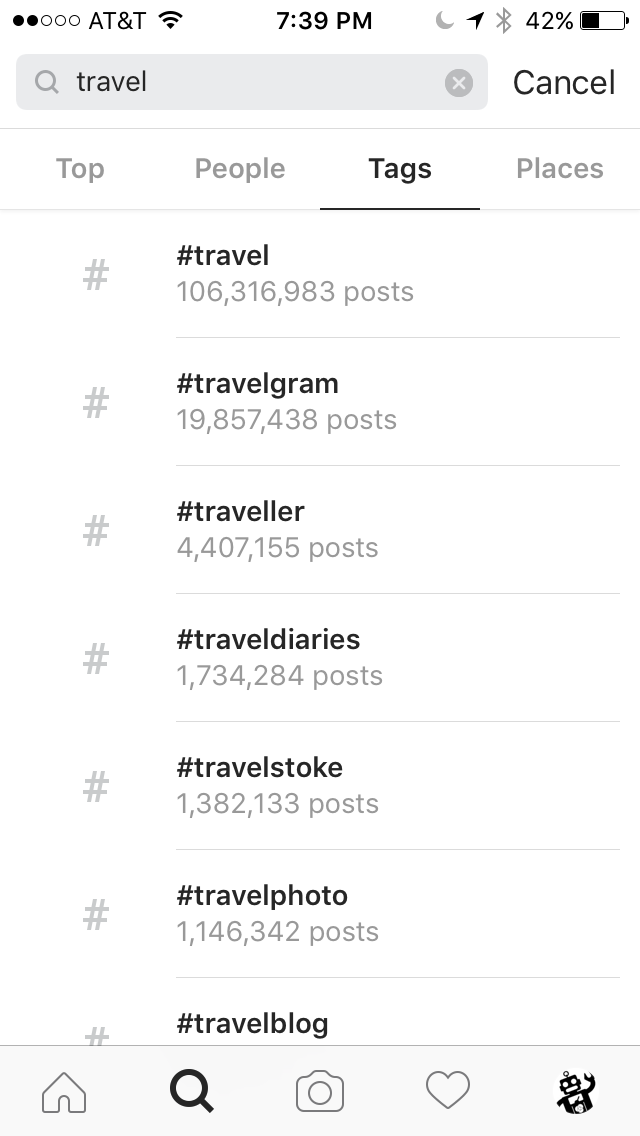 If you use a hashtag on your Story, it could be included in the relevant hashtag Story, which also appears on the hashtag page.
If you use a hashtag on your Story, it could be included in the relevant hashtag Story, which also appears on the hashtag page.
People can also choose to follow hashtags, which means they could see your hashtagged post in their feed even if they don’t follow you (yet).
Instagram hashtags can be a great way of building community online so people are motivated to engage with your brand. For example, as the way people work out suddenly changed in 2020, Nike Los Angeles used the #playinside hashtag to feature local people getting active in their homes.
View this post on Instagram
A post shared by Nike LA (@nikela)
All that being said, times they are a changin’. We recently ran an experiment looking specifically at the effectiveness of Instagram SEO vs Hashtags in 2022. And the results, well let’s just say they were eye-opening.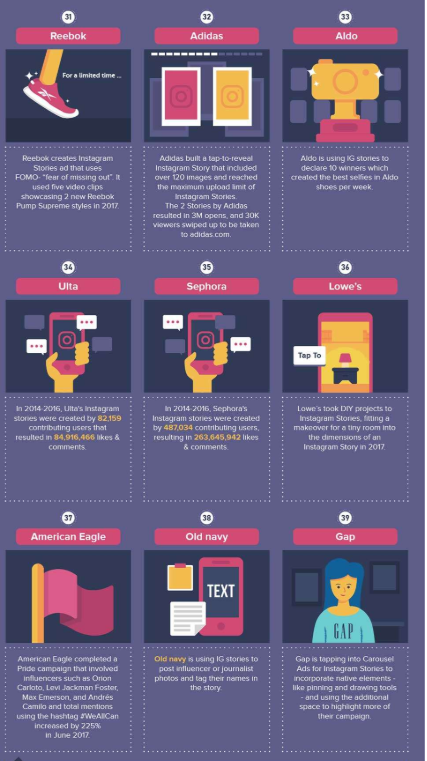
Check out the article or watch the video below to see what we found:
Top Instagram hashtags
These are the top 50 hashtags on Instagram:
- #love (1.835B)
- #instagood (1.150B)
- #fashion (812.7M)
- #photooftheday (797.3M)
- #beautiful (661.0M)
- #art (649.9M)
- #photography (583.1M)
- #happy (578.8M)
- #picoftheday (570.8M)
- #cute (569.1M)
- #follow (560.9M)
- #tbt (536.4M)
- #followme (528.5M)
- #nature (525.7M)
- #like4like (515.6M)
- #travel (497.3M)
- #instagram (482.6M)
- #style (472.
 3M)
3M) - #repost (471.4M)
- #summer454.2M
- #instadaily (444.0M)
- #selfie (422.6M)
- #me (420.3M)
- #friends (396.7M)
- #fitness (395.8M)
- #girl (393.8M)
- #food (391.9M)
- #fun (385.6M)
- #beauty (382.8M)
- #instalike (374.6M)
- #smile (364.5M)
- #family (357.7M)
- #photo (334.6M)
- #life (334.5M)
- #likeforlike (328.2M)
- #music (316.1M)
- #ootd (308.2M)
- #follow4follow (290.6M)
- #makeup (285.3M)
- #amazing (277.5M)
- #igers (276.5M)
- #nofilter (268.9M)
- #dog (264.0M)
- #model (254.7M)
- #sunset (249.8M)
- #beach (246.8M)
- #instamood (238.1M)
- #foodporn (229.4M)
- #motivation (229.1M)
- #followforfollow (227.9M)
Popular B2B Hashtags
- #business (101M)
- #entrepreneur (93M)
- #success (82M)
- #onlineshop (70M)
- #smallbusiness (104M)
- #marketing (69M)
- #branding (38M)
- #marketingdigital (39M)
- #innovation (14M)
- #ecommerce (12M)
- #retail (8.
 2M)
2M) - #onlinemarketing (8M)
- #contentmarketing (6.5M)
- #marketingtips (6.2M)
- #marketingstrategy (6M)
- #marketingstrategy (6M)
- #startups (5.3M)
- #management (5.1M)
- #businesstips (5.1M)
- #software (5M)
- #B2B (2.6M)
- #instagramforbusiness (1.4M)
- #b2bmarketing (528k)
- #eventmarketing (408k)
- #b2bsales (125k)
Popular B2C Hashtags
- #training (133M)
- #smallbusiness (104M)
- #business (101M)
- #sale (95M)
- #onlineshopping (85M)
- #marketing (69M)
- #marketingdigital (39M)
- #promo (35M)
- #socialmedia (32M)
- #digitalmarketing (25M)
- #startup (24M)
- #socialmediamarketing (19.
7M)
- #sales (19M)
- #advertising (15M)
- #ecommerce (12.3M)
- #networking (12.1M)
- #onlinebusiness (11.4M)
- #onlinemarketing (8M)
- #smallbiz (7M)
- #company (7.9M)
- #startuplife (5.6M)
- #contentmarketing (6.5M)
- #socialmediatips (3.2M)
- #marketplace (2.5M)
- #b2c (350k)
- #b2cmarketing (185k)
Keep in mind that the most popular Instagram hashtags are not necessarily the most effective.
A large number of posts may mean lots of people follow that hashtag, but it also means there’s a ton of content on it and your posts might get lost. Instagram suggests using a combination of popular and niche hashtags to reach different audiences, from broad to specific.
Types of popular Instagram hashtags
Instagram breaks hashtags down into nine distinct types:
Product or service hashtagsThese are basic keywords to describe your product or service, like #handbag or #divebar
Niche hashtagsThese get a little more specific, showing where you fit in the context of your industry, like #travelblogger or #foodblogger
Industry Instagram community hashtagsCommunities exist on Instagram, and these hashtags help you find and join them. Think #gardenersofinstagram or #craftersofinstgram
Special event or seasonal hashtagsThese can refer to real holidays or seasons, like #summerdays, or they can be used for all those National [Thing] Day holidays, like #nationalicecreamday or #nationalnailpolishday
Location hashtagsEven if you geo-tag your Instagram post, it can still be a good idea to include a hashtag that refers to your location, like #vancouvercraftbeer or #londoneats
Daily hashtagsEvery day has plenty of its own hashtags, from #MondayBlues right through to #SundayFunday.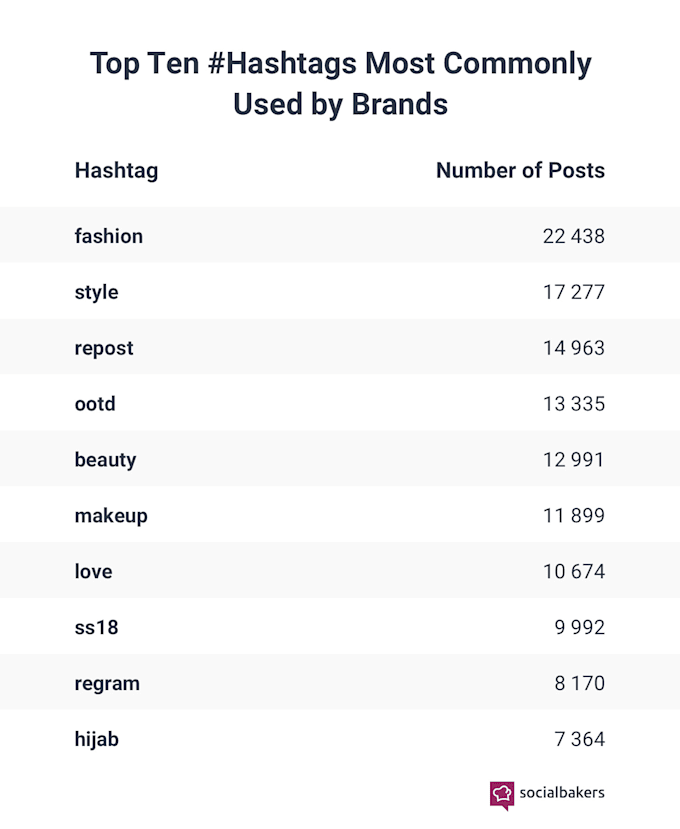 We created a whole list of daily hashtags for you to choose from if you’re looking for an easy source of hashtags to add to your posts.
We created a whole list of daily hashtags for you to choose from if you’re looking for an easy source of hashtags to add to your posts.
These hashtags combine elements of product hashtags, niche hashtags, and community hashtags. Basically, they’re phrases people use on Instagram to connect to existing communities in a slightly insider way, like #amwriting or #shewhowanders
Acronym hashtagsPerhaps the best-known acronym hashtag is #TBT for Throwback Thursday. Other popular acronym hashtags include #OOTD for outfit of the day, #FBF for flashback Friday, and #YOLO for you only live once.
Emoji hashtagsThese hashtags can include emojis on their own, like #????, or words or phrases with emojis attached, like #sunglasses????.
View this post on Instagram
A post shared by Cartems Donuts (@cartemsdonuts)
Branded hashtags are another great option for businesses on Instagram.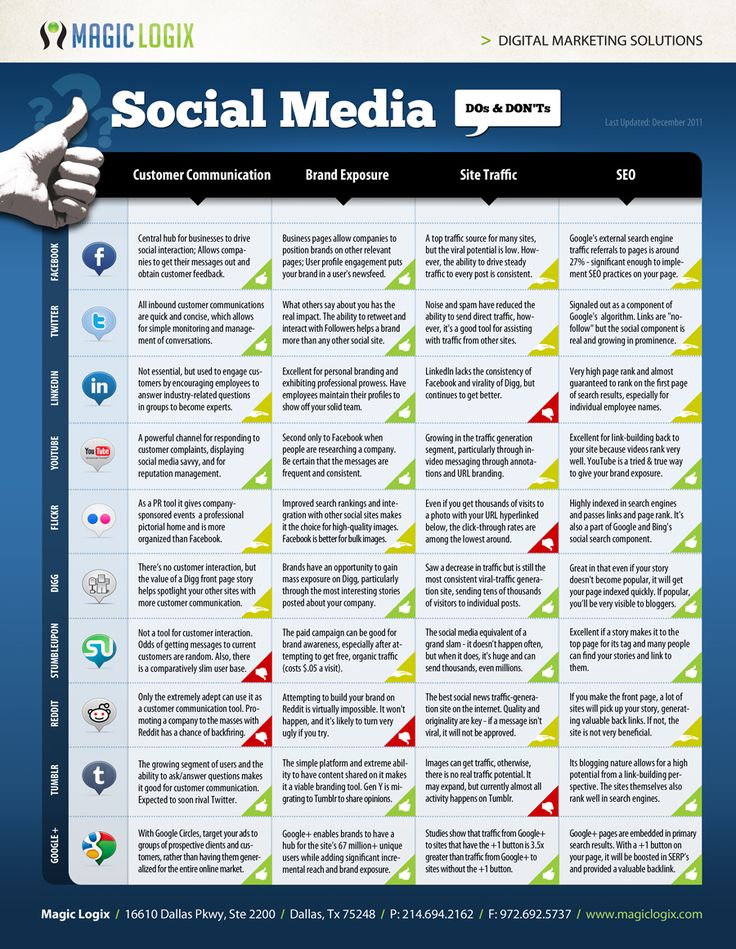 We’ll get into more details on those later in this post.
We’ll get into more details on those later in this post.
Instagram Hashtag FAQs
How many hashtags to use on Instagram
How to hide hashtags on Instagram
How to find trending hashtags on Instagram
How to search multiple hashtags on Instagram
How to find the best Instagram hashtags for YOUR brand
How many hashtags to use on Instagram
You can include up to 30 hashtags on a regular post, and up to 10 hashtags on a Story. If you try to include more, your comment or caption won’t post.
That said, just because you can use that many hashtags for Instagram doesn’t mean you should. There’s no right number of hashtags for every business, or even for every post by the same business.
The consensus is that about 11 hashtags is a good number to start with. But the most common number of hashtags to use on Instagram is between 3 and 5.
You’ll need to do some testing to determine what works best for your particular business.
How to hide hashtags on Instagram
When you’ve spent time crafting a great Instagram caption, you may not want to end your post with a prominent collection of hashtags. Fortunately, there are a couple of easy ways to make your hashtags less visible.
How to hide Instagram hashtags in a comment:- Write your caption as usual but don’t include any hashtags.
- Once your post is published, simply click the speech bubble icon under your post to leave a comment.
- Write out or paste the hashtags you want to include in the comment box and tap Post.
- On mobile, your hashtags won’t be visible unless a user taps View all comments. However, on desktop, your comment will remain in the top position, so this trick works better if you’re targeting a mobile audience.
Source: VW on Instagram
You can also use hashtags within the caption itself without them being super-visible.
- At the bottom of your caption, tap Return or Enter. If you don’t see a Return or Enter button, tap 123 to bring it up.
- Enter a punctuation mark (try a period, bullet, or dash), then hit Return again.
- Repeat steps 2 to 4 at least three times.
- Instagram hides captions after three lines, so your hashtags won’t be viewable unless your followers tap … more. Even then, your hashtags will be visually separated from your caption so they don’t distract from your copy.
How to hide hashtags on Instagram StoriesView this post on Instagram
A post shared by Rocky Mountain Soap Company (@rockymountainsoapco)
You can hide hashtags on Instagram Stories, too. One option is simply to minimize the appearance of your hashtags by pinching and shrinking them to make them quite small. You can also tap the hashtag sticker to change it from a white background to a semi-transparent one.
You can also tap the hashtag sticker to change it from a white background to a semi-transparent one.
If you want to hide your hashtags entirely, you can paste an emoji, sticker, or GIF overtop to obscure them.
Source: Christina Newberry
How to find trending hashtags on Instagram
Unlike Twitter, Instagram doesn’t publicize a list of trending hashtags. However, if you search for a hashtag on Instagram, you’ll see how many posts use that hashtag. You’ll also see a list of other popular Instagram hashtags using similar words, with post counts included too.
Source: Instagram
To search for a hashtag on desktop, enter the hashtag including the # symbol into the search box. On mobile, enter your search term in the search box, then tap Tags.
If you’re paying attention to your Instagram feed, you’ll learn to quickly spot trending hashtags as they emerge. Don’t be too quick to jump on a trend, though. Only post using a trending hashtag if it really makes sense for your business, and for the specific content in your post.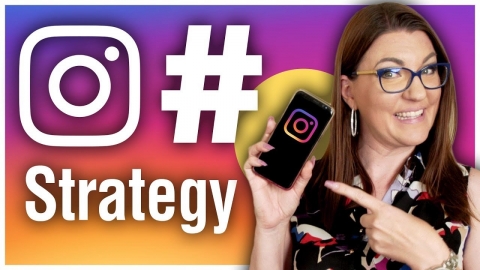
How to search multiple hashtags on Instagram
The easiest way to search multiple hashtags on Instagram is to set up search streams in a social listening tool like Hootsuite to track the hashtags you’re interested in so you can see all the relevant content on one screen without having to conduct each one as an individual Instagram hashtag search.
Source: Hootsuite
Instagram business profiles can conduct up to 30 unique hashtag searches in any given seven-day period.
We wrote a full post about the benefits of social listening if you want to dig deeper into how this works.
Bonus: Download a free checklist that reveals the exact steps a fitness influencer used to grow from 0 to 600,000+ followers on Instagram with no budget and no expensive gear.
Get the free guide right now!
How to find the best Instagram hashtags for YOUR brand
Here’s the truth. You could upload your photo to one of the many Instagram hashtag generators out there and get a bunch of free suggestions for hashtags.![]() But, these suggestions aren’t going to be as strategic and effective as doing the research yourself.
But, these suggestions aren’t going to be as strategic and effective as doing the research yourself.
Here’s some tips to try for coming up with Instagram hashtags that will actually drive reach and engagement.
Check out the competition
You don’t necessarily want to model your competition’s strategy too closely, but taking a look at the hashtags they use can give you some good clues about what’s working for others in your industry.
Maybe you’ll discover new hashtags to add to your repertoire. Or you could decide you don’t want to compete for the same eyeballs, in which case you can search for alternative hashtags to use.
See what hashtags your audience is already using
After all, if your audience is already using a certain hashtag, then other people just like them are probably using it too. Finding these existing Instagram communities is a great way to expand your audience and reach the people who are most likely to be interested in your business.
Keep an eye on your top followers and see what hashtags they’re using. Instagram’s search tool can give you some additional information about which hashtags the people you follow care about. When you conduct an Instagram hashtag search, the search tool will show you if anyone you follow also follows that hashtag. (Note that this only works on mobile, not on desktop.)
Source: Instagram
Use Instagram’s Related Hashtags feature
On any hashtag page, right above the “Top” and “Recent” tabs, you’ll find a list of related hashtags that you can scroll through by swiping left.
Source: Instagram
This is a great way to find relevant hashtags that might be a bit more niche than the big keyword-based hashtags you originally searched for. That means a more targeted audience with less content to compete with. These can be some of the best hashtags for Instagram brands wanting to connect with passionate communities.
Create a branded hashtag
The best hashtag for your brand may be one you create yourself. A branded hashtag is simply a tag that you create to promote your own brand or campaign.
A branded hashtag is simply a tag that you create to promote your own brand or campaign.
You can then let your audience know about your hashtag by including it in your Instagram bio and highlighting it in your captions and Instagram Stories. You could also consider running a contest with a branded hashtag to popularize the hashtag while also collecting user-generated content.
View this post on Instagram
A post shared by lululemon (@lululemon)
Source: Lululemon on Instagram
Make sure to follow your branded hashtag, both within the Instagram app and using a stream in your social media dashboard, so you can monitor how it’s being used. Look for opportunities to reshare great content or connect with influential members of your audience.
To follow a hashtag within Instagram, simply tap it, then tap the blue Follow button on the hashtag page.
Source: Instagram
7 tips for how to use hashtags on Instagram
1. Use Insights to see which tags work best
If you’ve made the switch to an Instagram business profile, you have access to post insights that tell you how many impressions you received from hashtags.
1. Select the post you want data on and tap View Insights below the post on the left.
2. Swipe up to see all the insights for that post, including the number of impressions from hashtags.
This data helps you figure out which hashtags are most effective for improving reach.
2. Include hashtags on Instagram Stories
Hashtag pages have an Instagram Story icon in the top left corner. Click on it and you’ll see a collection of Stories posts tagged with the hashtag from people with public profiles.
Source: Instagram
There are two ways to add hashtags to your Stories. The first method is to use the hashtag sticker.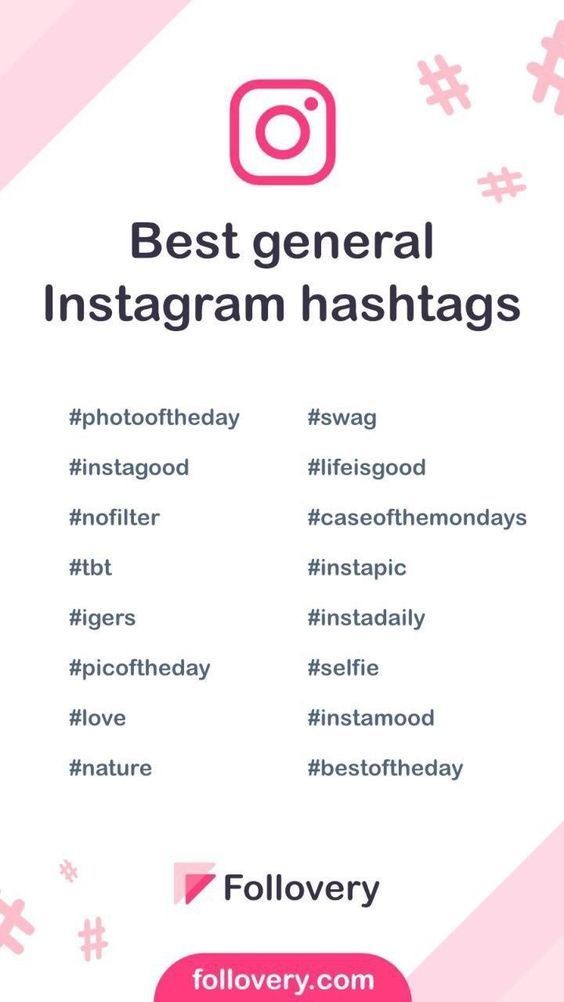
Source: Instagram
Or you can simply use the text tool and the # symbol to type out the hashtag the same way you would on a photo or video post.
3. Avoid banned hashtags and spammy hashtags
When inappropriate content becomes associated with a hashtag, Instagram might ban that hashtag.
This doesn’t mean that you can’t use it at all. Instead, it means that if you click on the tag, you will only see top posts. You won’t see recent posts, and there won’t be any Stories associated with the hashtag.
Here’s what it looks like when you run into a banned hashtag:
Source: Instagram
The only way to know if a hashtag is banned is to check it before you use it. This is a good practice to put in place every time you add a new hashtag to your repertoire. Using banned hashtags can cause a drop in engagement, as your use of legitimate hashtags might also become less effective because you could be dropped in the algorithm.
Even if they’re not banned, you should avoid hashtags that shamelessly solicit likes and followers. Examples include #followme, #like4like, #follow4follow, #tagsforlikes, and so on.
Using these will attract bots, spammers, and other Instagram users who have no intention of engaging with you in any meaningful way. They also show your followers that your brand is okay with engaging in spammy behaviour. And that’s not a good look.
4. Understand how hashtag pages work
Hashtag pages are a great way to expose your content to a new audience, especially if you can get featured in the Top section.
Hashtag pages show off all the content associated with a specific hashtag. If someone searches for a post and yours is the most recent with that hashtag, it will be the first thing they see in the Recent section.
Of course, it’s much easier to stay at the top of the Recent section for a less-popular or really niche hashtag.
Keep in mind that the Recent section is sorted based on when each post was originally shared. If you add hashtags later, either through a comment or by editing the caption, this won’t bump your post up for recency.
If you add hashtags later, either through a comment or by editing the caption, this won’t bump your post up for recency.
5. Don’t use irrelevant or repetitive hashtags
It might be tempting to simply copy and paste the same long list of hashtags on every post, but don’t do it. Instagram’s community guidelines clearly state that “posting repetitive comments or content” is not okay. If you use the same hashtags for every post, your content will be penalized by the algorithm.
When you create a post, only use hashtags that make sense. If you tag a post with #wanderlust, for example, your content must be something globetrotters will want to comment on, like, and share.
It’s not about getting seen by a lot of people, it’s about getting seen by the right people. That’s how hashtags lead to higher engagement and more followers. Pick and choose the right keywords for each post individually.
6. Make sure that hashtag means what you think it means
Hashtags are often a string of words stuck together. That can create some problems when it’s not clear where one word ends and the next begins.
That can create some problems when it’s not clear where one word ends and the next begins.
One of the worst examples of this was the #susanalbumparty fiasco from way back in 2012. It was a launch celebration hashtag for Susan Boyle’s new album. But read it slowly and you might pick up some words in the middle that clearly make the hashtag a bit… problematic.
Amazon played with this kind of hashtag mistake to promote Top Gear. This was done on purpose, but it would be an easy mistake to combine a possessive “s” and the word “hit” by accident.
View this post on Instagram
A post shared by Mathew chronic (@clarkson_and_memes)
Brands sometimes also are too keen to hop onto a trending hashtag without fully understanding the context. When the context is challenging, this can create a PR disaster for the brand.
And sometimes a brand just doesn’t check to see if a hashtag is already in use before creating a whole campaign. Burger King was guilty of this back in 2013, when they used the hashtag #WTFF to mean “What The French Fry.”
View this post on Instagram
A post shared by #WTFF (@wtff2013)
Since you already know what WTF stands for, you can probably guess why this was a problem.
7. Save hashtags for future use
If you often use the same hashtags, you can save them in a note to reduce time typing them in over and over.
Wait, didn’t we just tell you not to use the same hashtags on every post? It’s true—you should not overuse the same set of hashtags. That said, it is still really useful to have a list of hashtags relevant to the various kinds of content you post.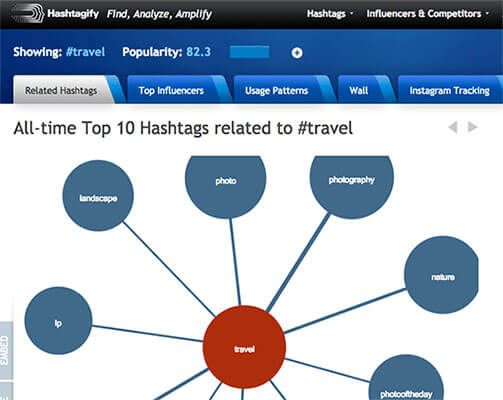 You could even create separate lists of hashtags relevant to the different types of posts you create.
You could even create separate lists of hashtags relevant to the different types of posts you create.
Just create a list of hashtags in your notes app, ready to add to your posts.
You can then pick and choose a few hashtags to use each time, rather than having to remember the hashtags or search for new ones for each post. This also gives you the time to check out what kind of content is already being posted for these hashtags, so you don’t make one of the mistakes mentioned above.
Just remember that every one of the Instagram hashtags you use on a post must fit with the content and should not be too repetitive. Don’t copy and paste your whole saved list onto every post.
Manage your entire Instagram presence and save time with Hootsuite. Schedule posts and Stories, find the best hashtags, easily engage the audience, measure performance, and more. Try it free today.
Get Started
Easily create, analyze, and schedule Instagram posts, Stories, and Reels with Hootsuite.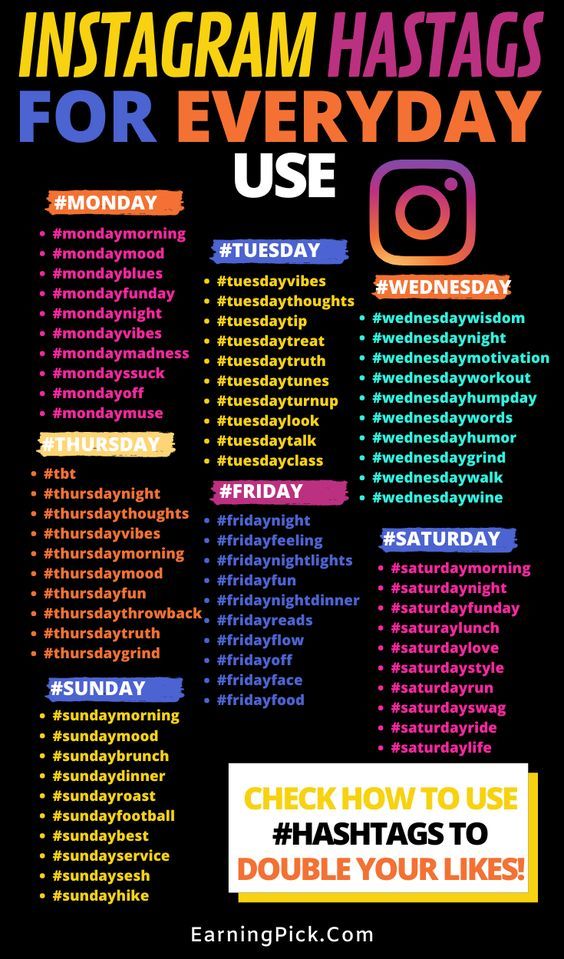 Save time and get results.
Save time and get results.
Free 30-Day Trial
in a post or in the first comment? — Social networks on vc.ru
When it comes to the best place to place hashtags on Instagram (in a post or comment), the opinions of SMM experts differ.
36638 views
To debunk hashtag myths, Socialinsider partnered with Quuu to analyze 649,895 posts from 6,784 business accounts with varying follower counts. The research report contains useful information for choosing the location of hashtags, their number and design, depending on the size of the accounts and the purpose of the post.
1. Most brands use hashtags in the text of the post
There is a perception that putting hashtags in the first comment makes a post neater and more engaging, while having hashtags in the post itself can look spammy. It seems that not all brands think so.
- 87.7% of brands use hashtags in profile text, compared to only 12.
 3% in comments.
3% in comments.
- Among all analyzed posts in 9In 3.8% of cases, hashtags were placed in the text, in 6.2% - in the first comment.
2. Reach and number of impressions are higher when hashtags are placed in the text of the post
Posting hashtags in a post gets more impressions, regardless of account size. However, a detailed analysis reveals clear differences between accounts with up to 100,000 followers and more than 100,000.
How to use hashtags for maximum reach
The use of hashtags in the text of the post gives more coverage for posts of small and medium profiles. However, for accounts with more than 100 thousand followers, the situation is different: the average reach of posts with hashtags in the text is lower (14.8%) than for posts with hashtags in the first comment (16.9%).
Jenn Herman, social media strategist, notes: “It makes no significant difference to the algorithm where exactly you place your hashtags.
The exception is the most frequent hashtags like #love. Using such a hashtag in a comment can lead to a drop in reach.”
PromoPult module for targeted advertising in social networks: all channels in one account, minimum budgets, automated creation of creatives, automatic bid management, convenient selection of targeting.
How to use hashtags to increase impressions
If the main goal is to make the post visible to the maximum number of users, while engagement is not important, impressions will be the key metric. In this case, hashtags should be placed in the body of the post, regardless of the size of the profile.
Unlike small and medium-sized accounts, the average number of impressions of a post of large Instagram accounts (more than 100 thousand followers) practically does not depend on the location of the hashtags.
Naturally, the result also depends on the number of hashtags.
3. Brands love extremes: if not 7, then 30 hashtags at once
Experts regularly try to determine the ideal number of hashtags in an Instagram post.
Some people think that the optimal number is up to 7, others - up to 11, others are sure that it is worth using all 30 hashtags (maximum on Instagram). And someone simply advises brands to “find your magic number.”
Socialinsider and Quuu experts also recommend doing your own experiments. Read more about this in the Instagram hashtag guide.
The recommendations below are based on how the analyzed brands use hashtags.
Among the brands that place hashtags in the text of the post, two extremes can be distinguished: either there are 7 hashtags, or their number is close to 30
These extremes are clearly visible on the graph:
Things are different with hashtags in the first comment - in most cases there are only two of them:
However, is this the best option?
Alex Khan, Social Media Coach: “I think A/B testing is always a must.
In my experience, there is no difference in where hashtags are placed. Since Instagram changes its algorithms regularly, it's much more important to constantly test what works best for you, use a variety of hashtags, and experiment with new ones."
4. Engagement depends on the number of followers, placement and number of hashtags
At first glance, it may seem that the placement of hashtags has little to no effect on user engagement rates.
A closer look reveals that engagement is affected by both the placement of hashtags and the number of followers.
So, where to place hashtags and how many should there be?
By segmenting profiles by number of followers and looking at each group individually, you can get a general idea of which posts are most successful.
Below are recommendations on the number and placement of hashtags for accounts with different numbers of followers (peak values are taken into account).
Ed. We would like to remind you that the recommendations are based on a specific study conducted in 2018-2019. These recommendations are not absolute - everything needs to be tested on your account and your audience.
- Less than 5 thousand followers: 6 hashtags, placed in the post.
Orange line - hashtags in the post, green line - in the first comment
- From 5 to 10 thousand followers: 5 hashtags, placed in the first comment.
Orange line - hashtags in the post, green line - in the first comment
- From 10 to 50 thousand subscribers: 2 hashtags, placed in the post.
Orange line - hashtags in the post, green line - in the first comment
- From 50 thousand to 100 thousand subscribers - 8 hashtags are placed in the post.
Orange line - hashtags in the post, green line - in the first comment
- More than 100 thousand subscribers - 6 hashtags, placed in the first comment.

Orange line - hashtags in the post, green line - in the first comment
Please note : While using a lot of hashtags doesn't necessarily lead to poor results, none of the posts with hashtags close to 30 tops, regardless of account size.
5. Posts with hidden hashtags have a higher engagement rate
Hashtags can be hidden to make the post look neater and not distract readers from the content.
This is very easy to do - just add empty lines (or more text) before the list of hashtags. This way, users won’t see the hashtag clutter until the full text of the post is expanded.
You can hide hashtags both in the post and in the first comment.
Traditionally, lines with one dot are used instead of empty lines. To make such a block, you need to prepare it in a text editor (since the Instagram editor still does not allow you to create new lines).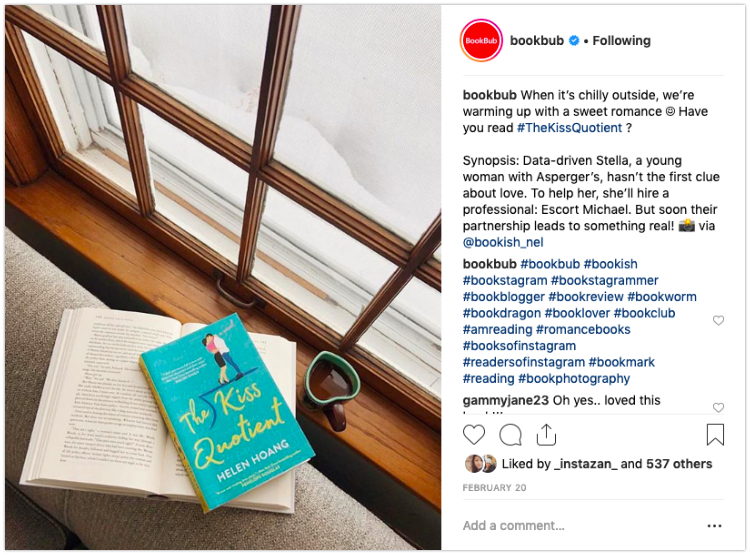
So let's see how hiding hashtags affects reach and engagement.
- Most brands that use hashtags in their posts don't hide them.
- However, engagement is (slightly) higher for posts with hidden hashtags:
Shane Baker, Digital Strategist and Brand Consultant: “I prefer to have hashtags in a post because they are more credible.
We are marketers and using hashtags is a useful marketing tool, so don't be ashamed to hide them.
However, if you feel that too many hashtags make your posts trash, you can hide them so that only those who expand the post and read it to the end can see them.”
- When posting hashtags in the first comment, most brands don't hide them either:
- Engagement rate is higher for posts with visible hashtags in the first comment:
Note ed .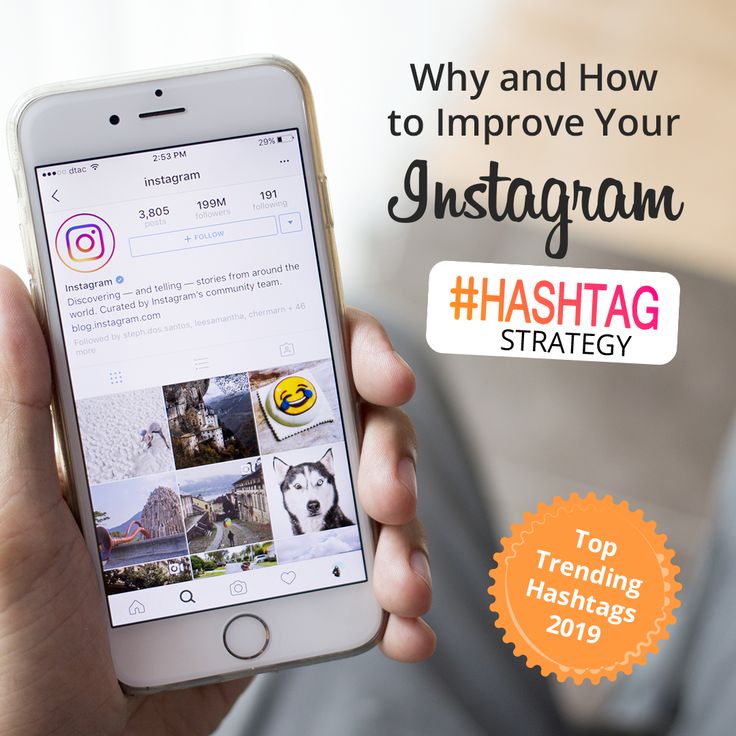 In the end, honesty pays off. If you want to put hashtags - put them and do not be ashamed.
In the end, honesty pays off. If you want to put hashtags - put them and do not be ashamed.
6. On average, you can get 1-2 more comments on a post if hashtags are placed in the first comment
As a rule, the larger the account, the larger the brand, which means more budget for advertising and other paid promotion tools.
To understand how brands get comments naturally (organically), we calculated the median number of comments.
The placement of hashtags has little effect on the number of comments.
We can safely say that posts from accounts with up to 100 thousand followers receive 1-2 more comments if hashtags are placed in the first comment.
7. On average, posts with hashtags in the first comment get slightly more likes
Looking at the median number of likes, the scores are also higher for posts that had hashtags in the first comment.
True, you should pay attention to the exception: posts of accounts with 10-50 thousand subscribers have better results if the hashtags are placed in the text.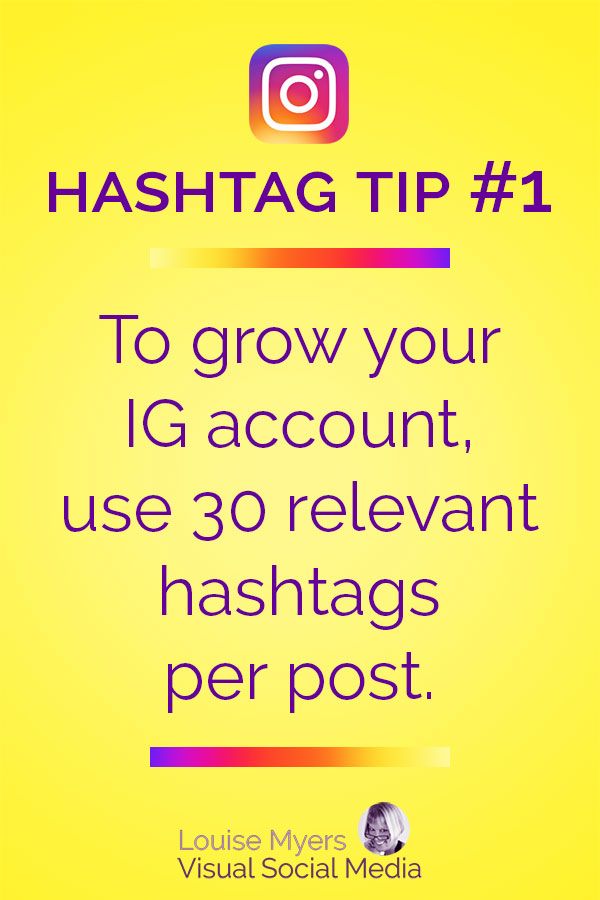
Posting hashtags in the first comment seems to get more likes for most accounts.
And what to do with all this? How to proceed in a particular case?
Ed. note . Let's be honest - in some cases, the difference between the hashtags in a post or comment was more than insignificant. But some points in the study still deserve attention.
It is worth trying both options in practice, and at different posts with different goals. Perhaps the strategies described here will work. And yes, still don’t do 30 hashtags in a post, such redundancy is just annoying.
When choosing a hashtag strategy, consider your KPIs and account size.
If the goal of a post is to convey information to the widest possible audience, then reach and impressions will be performance indicators. In this case, it is not so important whether users will interact with the post. For example, accounts with less than 100k followers should place hidden hashtags in the body of the post.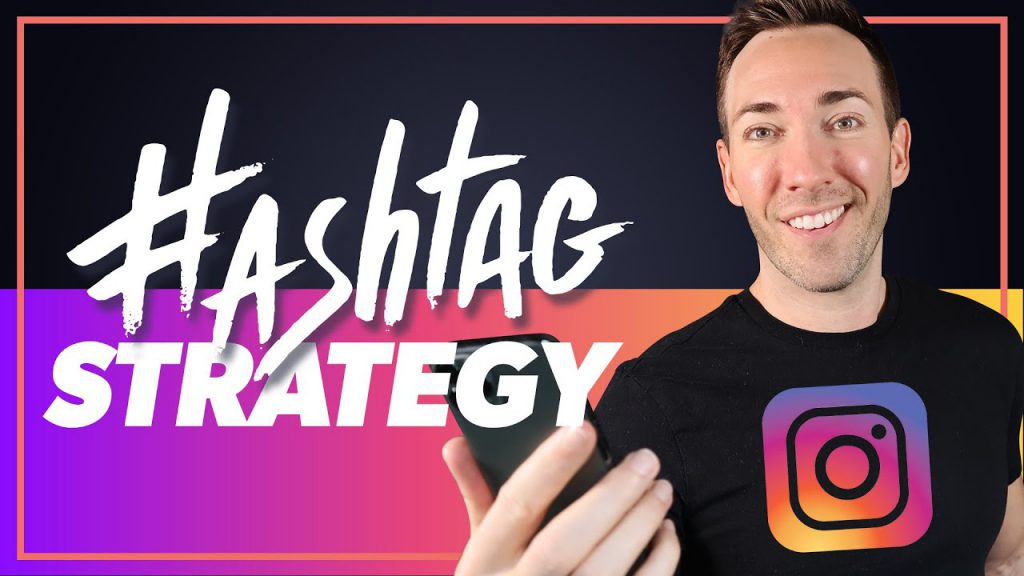
If user interaction with a post is more important to you, then pay attention to the recommendations for increasing engagement, reach and impressions depending on the size of the account:
- Less than 5k followers: 6 hidden hashtags per post.
- From 5 to 10 thousand followers: 5 visible hashtags per post.
- From 10k to 50k followers: 2 hidden hashtags per post.
- From 50 to 100 thousand followers: 8 hidden hashtags in a post.
- Over 10k followers: 6 hashtags visible in the first comment.
Note ed . And remember, these recommendations are based on a large 2018-2019 study. in the western segment of Instagram. Any recommendation you want to apply needs to be tested, not taken as an absolute rule.
Main findings of the study
- 87% of brands prefer to use hashtags in their post text.
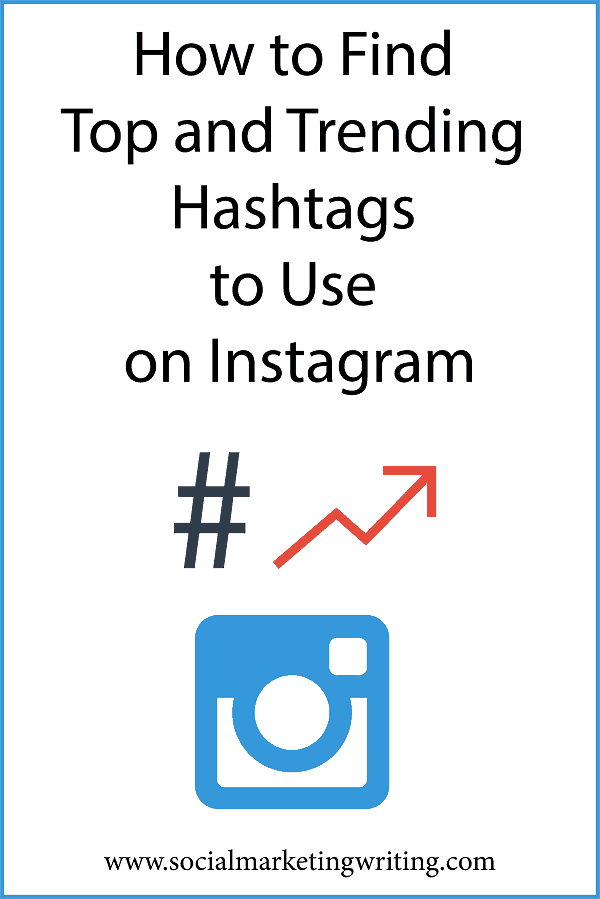
- Posts from accounts with less than 100k followers have higher impressions and reach when hashtags are placed in the post itself.
- Most brands use either 7 or almost 30 hashtags and place them in a post.
- Engagement rates depend on account size, number and placement of hashtags.
- Posts with hidden hashtags in the text have higher engagement rates.
- Posts of accounts with less than 100k followers get 1-2 more comments on average if hashtags are placed in the first comment.
- On average, posts with hashtags in the first comment get slightly more likes.
Download the original study (PDF).
Rules for selecting hashtags for Instagram in 2022
Hashtags are your faithful assistants when promoting your brand on social networks. It is with the help of them that you can attract additional traffic and, hopefully, convert it into a subscription or even a sale.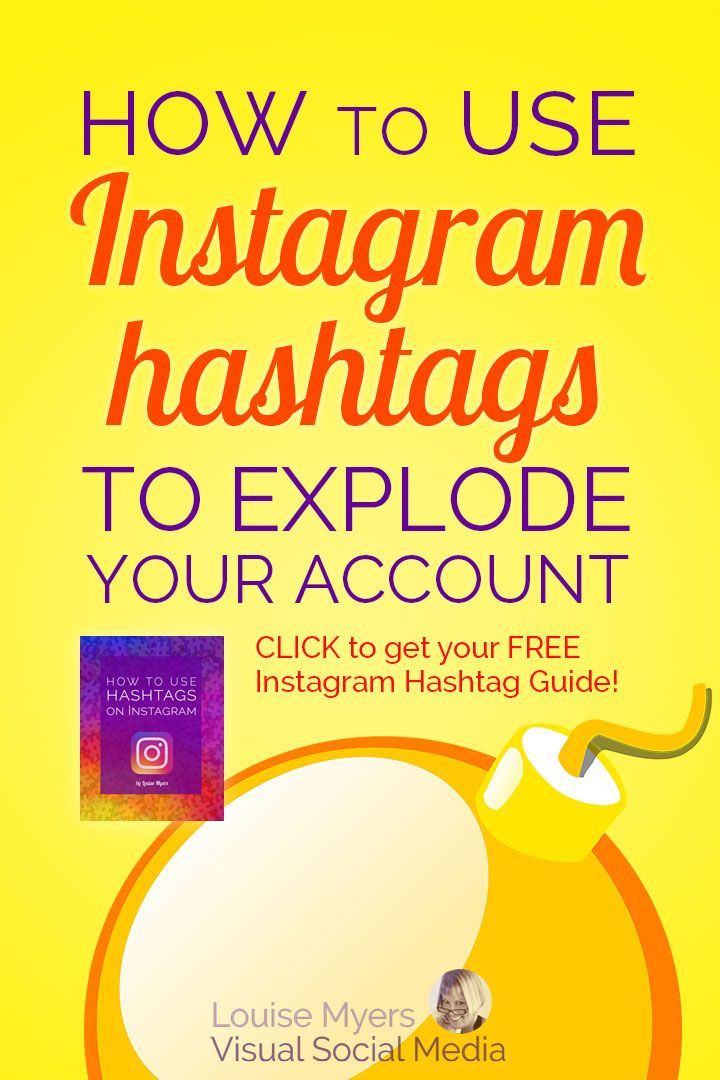
Types of hashtags
A hashtag is a word or phrase that is thematically related to your publication and helps the user quickly find the content of interest.
Conditionally useful hashtags and Instagram* in 2021 can be divided into several categories:
1) Geographic
These hashtags are linked to a place, most often a city or country. They are good to use if you provide services or sell any goods through your account. Do not write geographical names separately, but rather glue them with the name of the service.
In this example, photographer Anna Getman, who shoots in Ukraine and Moldova, lists available cities in hashtags. So, when searching for services, it will be easier to find it.
An example of using a geographic hashtag on Instagram*2) Thematic
These hashtags describe the essence of your service. The goal is similar - when someone searches for an account on social networks, it will be easier to find you. It is not necessary to limit yourself to one thematic hashtag, you can write several. If it’s hard for you to pick your own out of your head, just enter your hashtag option and see what your colleagues write.
It is not necessary to limit yourself to one thematic hashtag, you can write several. If it’s hard for you to pick your own out of your head, just enter your hashtag option and see what your colleagues write.
In this case, the Cake Studio used several hashtags that describe the taste and features of the dessert: #cakes without mastic #cakes to order #chocolatecake.
An example of using a thematic hashtag on Instagram*3) Categories
These hashtags on Instagram* are not introduced to make you easier to be found by the general public. You create them to make it easier for your subscribers to navigate the content you submit. You can even list them in your profile header for easier navigation.
The example clearly shows how blogger Arina Vintovkina directs her followers to read more posts about polyamory using her branded hashtag.
An example of using a category hashtag on Instagram*4) Search Engines
These Instagram* hashtags come in handy if you are looking for a specialist, volunteer or service model. Some professionals follow certain hashtags and your post with the search will get into their feed.
Some professionals follow certain hashtags and your post with the search will get into their feed.
This method of finding girls for a trial session is perfectly used by a beautician in St. Petersburg. Note that she also added geodata to the search hashtag to filter out irrelevant queries.
Instagram search hashtag example*5) Branded
These are hashtags mentioning the brand name. With their help, you can search for UGC and track the company's reputation. Also, if you run some kind of activation, you will be able to track all the posts that take part in the contest.
In this case, blogger Anton Sokolov congratulates Starbucks on its 13th anniversary and uses both a regular branded hashtag and a special birthday hashtag in his post.
An example of using a branded hashtag on Instagram*In this example, the girl Lana Forju takes part in several fashion contests and leaves a branded hashtag in her post.
An example of using a branded hashtag for a contest by a subscriber Another option to use a branded hashtag on Instagram is to invite a company to a dialogue if you want to cooperate with them, report a problem, or even call for a response in a controversial situation.
As an example, look at the post by the girl Rina, where she describes the not very successful experience of flying with Aeroflot and tags her with a branded hashtag. Of course, in such a situation, the best solution for the company would be to come in the comments and clarify which flight it flew in order to fix the problem with the sound on board.
An example of using a branded hashtag in a conflict situation6) Hype hashtags
Hype hashtags do not last long, but they allow you to join the information flow of a sensational event.
Posts about peaceful protests in Belarus can serve as an example. As one of the options for publications on this topic, the society uses the hashtag slogan #faithfullmaybe. It does not belong to anyone alone, on the contrary, its strength lies in the fact that it is used by people everywhere.
An example of using a hype hashtag on Instagram*7) Instagram hashtags* for promotion
This type includes hashtags that call for mutual PR, exchange of likes or subscriptions. Some of them are among the prohibited tags. Read about them below.
Some of them are among the prohibited tags. Read about them below.
Among the allowed popular hashtags on Instagram* for promotion:
- follow4follow and f4f;
- liketime
- sfs (stands for “shout out for shout out”),
- Mutual PR.
You can use them for your posts, but it's better to just keep track of such activations. By themselves, such mutual PR campaigns and hashtags on Instagram * for likes can bring little result, but an irrelevant audience will come to you, which itself just wants more subscribers. Therefore, whether it is worth investing in it is up to you.
Here is an example of using hashtags on Instagram* for likes and followers in the account of blogger Alena Dyatlenko. This is the fourth time she has played in a row. Such PR allows you to temporarily gather an audience, but you also need to be prepared for a rollback. Subscribers can leave en masse, and this will lower the issuance of the profile in the general feed.![]() At the same time, if Alena has time to charm her new audience, they may stay.
At the same time, if Alena has time to charm her new audience, they may stay.
What hashtags should not be used?
Before you make hashtags on Instagram*, you should think carefully about why you are doing it. The best hashtags on Instagram* are those that serve the ultimate purpose of engaging or targeting the user.
However, some accounts post dozens of general hashtags. This is useless, because for each position, this post gets into the flow of the same general hashtags. The chance that your post will be seen is minimal.
Here is an example of a bunch of useless hashtags from the City Woman showroom account. Every second, a dozen more posts are added under the tag #skirt, and the image does not even have a skirt. You can correct this situation if:
- Leave only the hashtags that are relevant to the case.
- Add a geopart – for example, #bootkikrasnoyarsk, #bootkimoskva.

Another bad idea is to use overly long and complex hashtags. Humans are lazy creatures, besides, the longer you type, the easier it is to make a mistake. Therefore, before putting a hashtag on Instagram * for 10-15 characters, at least read it aloud and look for synonyms. And, from an aesthetic point of view, they do not look very good, because. creates unnecessary information noise.
Here is an example of a post by realtor Maria Tyutyunnik. In general, the post is not bad, but it is better to replace the hashtag #realtor servicesgidnepr with #realtordnepr. So there will be more chances that this post will be found, it is unlikely that someone will manually drive in such a long phrase. You should also exclude common tags like #invisibility.
An example of unsuccessful use of a too long hashtag on Instagram*Banned hashtags on Instagram*
Instagram has its own list of banned hashtags, which is updated periodically.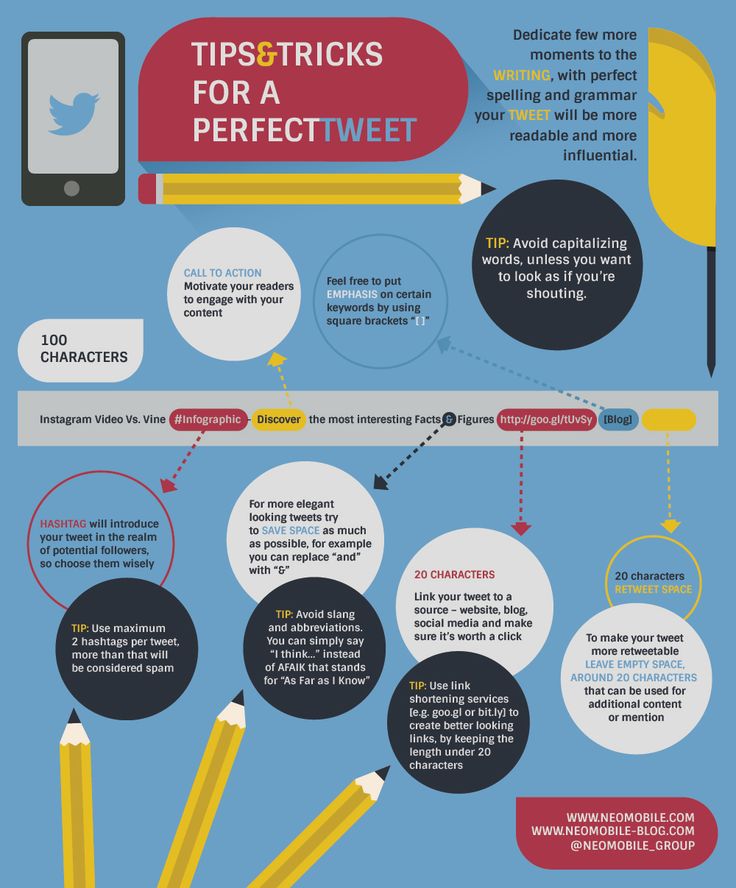 It mainly includes illegal, racist, sexualized, spam tags. Mostly they are in English, but in Russian they are also visible. According to unverified data, the number of hashtags in it is several thousand, however, it is not in the public domain.
It mainly includes illegal, racist, sexualized, spam tags. Mostly they are in English, but in Russian they are also visible. According to unverified data, the number of hashtags in it is several thousand, however, it is not in the public domain.
How can you tell if your hashtag is on the banned list? Enter the option of interest in the search bar and see if there are any hidden posts on it. If you still decide to use them, be prepared for the fact that the post can be deleted, and you will fall into the shadowban.
Prohibited hashtags on Instagram*Features of using hashtags on Instagram*
Instagram* has integrated hashtags into all types of publications: both regular posts and stories. How to add hashtags to Instagram*? Very simple. If we are talking about a regular publication, then write them at the beginning of the post if it is a rubricator, or at the end of the post if they are not of particular importance for existing subscribers.
If you want to hide hashtags from a post, write them in a comment under the post, the post will also be shown in the feed for this tag.
Another way is to put a few dots in the column after the post.
Separating hashtags in a post using dotsThe maximum number of hashtags in a post is 30. If you plan to publish via SMMplanner, the system will indicate how many more tags you can add.
Planning a publication in SMMplannerYou can also attach a hashtag to stories, there is even a special sticker for this. By clicking on it, you can see all the stories under this hashtag, as well as get into this thematic feed yourself.
Instagram hashtag story feed*To go directly to the hashtag feed, enter a query through the “#” in the search, for example, #haircare. There, everyone can subscribe to this hashtag, and then posts mentioning it will appear in your feed along with other subscriptions.
How to find hashtags from a photo
“Gennady” is a telegram bot that selects hashtags on Instagram* and other social networks based on an uploaded photo. It works simply - we throw a photo and a smart algorithm selects the most suitable hashtags for it.
It works simply - we throw a photo and a smart algorithm selects the most suitable hashtags for it.
How to find hashtags by photo:
Step 1. Go to the "Bot Gennady" and press the /keywords command or the button "Hashtag by photo".
How to choose a hashtag from a photo Step 2. Attach a photo or image (paperclip button) and send it to the bot.
Step 3. In a second, we get a list of relevant hashtags. You can copy all or part of them - for this, click on the "Edit hashtags" button.
The bot can process only one photo at a timeUse the "Gennady" bot to automate the work.
"Hashtag by photo" will help you choose hashtags for the post, and "Idea Generator" will tell you what type of content to post on the social network.
How to choose popular hashtags for Instagram*: manually and using generators
To understand the meaning, let's learn how to choose the right hashtags on Instagram* manually.
You need to choose hashtags that you would use to search for your product on Instagram*. For example, you want to buy a skirt in Saratov. How will you type in the Instagram search *? Probably the same as in the browser search engine, only together: #buyyubkusarat and variations on this theme.
Or you want to visit a zoo farm with a child in the suburbs. #zoofermapodmoskovye, right? You don't need some abstract farm that you can't get to. Namely, in a particular region or city.
What if you sell honey? And it doesn't matter to you where the buyer is, you will send him the product at home. Let's see. Dial #honey or #honey? But there are several hundred thousand publications on these hashtags, your posts will simply be lost among them. Then, maybe, again, a query like in a regular search engine: #buyhoney or #buyhoney? What is the best tag?
To find out which one is better, let's determine the frequency of future hashtags. Frequency refers to the number of posts for a given hashtag.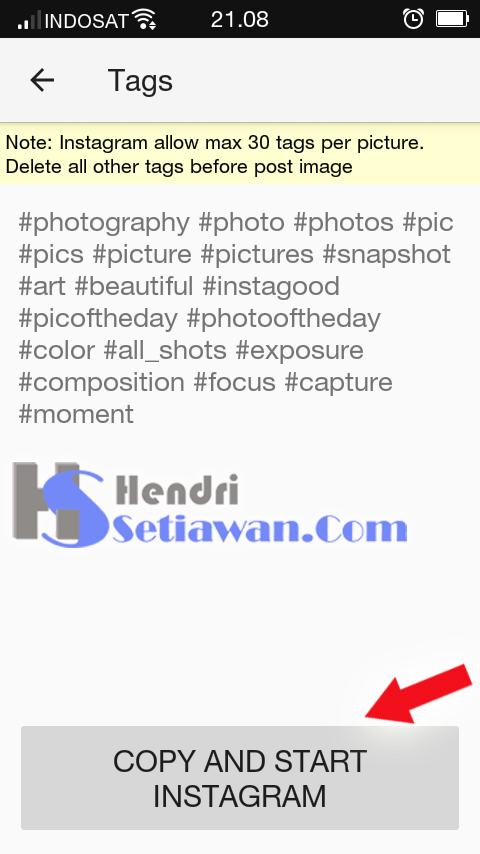 We go to Instagram *, drive both options into the Search, go to the "Tags" tab and look at the number of publications for this tag.
We go to Instagram *, drive both options into the Search, go to the "Tags" tab and look at the number of publications for this tag.
To find out how to choose hashtags on Instagram * and which one to use, let's calculate the desired frequency. Let's take the last 9 posts in the account and write down the number of likes from photos and the number of views from videos.
For example, let's take an account yuralitvinov selling honey, and its 9 last postsFor example, under the last post with a video 163 views + under the penultimate 47 likes + 57 likes under the third .... and so 9sum the numbers. We divide the sum by 9, the number of summed posts. We get the average number of likes for your account. And we multiply this amount by 1000.
 ..and clearly the calculations on the photo
..and clearly the calculations on the photo In our example, the maximum frequency of the hashtags used should not exceed 84,000. should be less.
Let's go back to the honey example. Both variations of the #medbuy and #buymed hashtags are suitable for our account, since their frequency is less than 84,000, which means that more people will find you using it than using a high-frequency hashtag, among the publications of which it is easy to get lost.
Now the principle of choosing hashtags is clear, let's move on to searching for them.
- Write in a spreadsheet, such as Excel, the keywords for your business. By what words can subscribers and buyers come to you, what can you offer them?
- Once you've come up with a few words, type them into an Instagram search*, check the frequency, and write them down in the table next to each tag.
- Scroll down the page after entering each word, because Instagram* will give you hashtag queries similar to your tag.
 Choose the ones that are appropriate in meaning and frequency, add them to the table.
Choose the ones that are appropriate in meaning and frequency, add them to the table. - Select the highest frequency hashtags, click on them, and go through the most popular publications by writing hashtags. When you collect the list, drive each word into the search again, see the frequency and hashtags-synonyms. Take the appropriate ones in the table.
We managed to find the following hashtags for Instagram*.
Hashtags collected from other people's accounts fell into two columns: in green, which can be used by our honey selling account, and general high-frequency hashtags that are not desirable to use, they will not be usefulPlease note that the hashtag of the same meaning can be written in such a way that it becomes low and mid-frequency from high-frequency. For example: #farmproducts is a high-frequency tag, and #farmproducts and #farmproductsofrostov can already be used for our account.
Of course, we didn't include all possible hashtags in the table.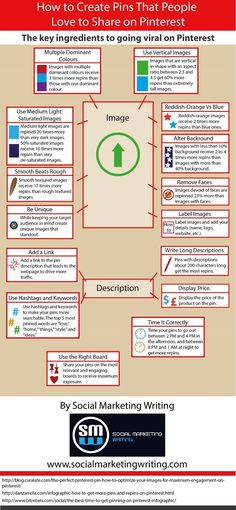 When selecting hashtags for Instagram*, you can add:
When selecting hashtags for Instagram*, you can add:
- specific bee products, if the post is about them;
- a specific type of honey, if the post is about it;
- add the word buy to the first two paragraphs;
- try writing #like this and #like_like.
When the list of possible hashtags for you is ready, divide it into groups of 8-10 tags and add to posts. Instagram* allows you to post up to 30 hashtags per post, but you don't need that many. Include hashtags of different frequencies from your list in these 8-10 pieces.
Track likes under different hashtag groups. Calculate successful ones, change some tags between groups over time. When you see that there are significantly more likes and views, activity has increased, once again calculate the maximum frequency for your blog and select a few more high-frequency hashtags to include them in your groups.
Finding popular hashtags on Instagram* in 2020 doesn't have to be done by hand. There are hashtag generators for Instagram* that will readily help in this matter. But you should not rely only on them, use them as an addition to manual search. Why? Answer below.
There are hashtag generators for Instagram* that will readily help in this matter. But you should not rely only on them, use them as an addition to manual search. Why? Answer below.
Keyword Tool
Keyword Tool, especially suitable if you want to use the most popular hashtags on Instagram* and rely on numbers. In Keyword, you can choose the language in which to select hashtags, as well as set negative keywords. In the free version, only a part of the top hashtags on Instagram is available*, paid access costs from 69$ per month.
Don't forget to select the "Instagram*" tabSelecting hashtags through the service to promote your page will be difficult for some queries. On our request to #buyhoney, we are offered to #buybear and #buymedicalcoats.
TagsFinder
Online hashtag generator that creates different collections for your queries: related hashtags, similar, similar words. You can drive up to 10 words into the search bar, write stop words.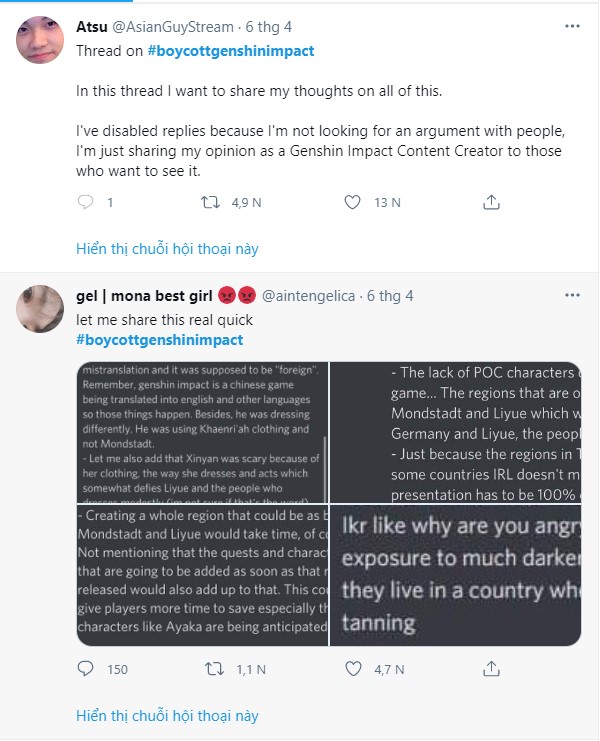 Also on the site you can see a list of banned tags, as well as tags that are popular by region.
Also on the site you can see a list of banned tags, as well as tags that are popular by region.
Selects not ideally. And if you can explain the #buyhoney tag #buybear to the request, then by entering the combination #buyhoney #natural #bees, you will get hashtags about buying clothes, #comedyclub and #hairdressernatal in the search results.
TopTag
A service designed to help promote and promote your account. However, it works in the same way as the previous ones, clumsily. The query #naturalhoney displays everything that is searched for natural in the world of Instagram*: hair, stones, compositions, food, clothes, cosmetics, fabrics ... everything except honey.
You can work with the service, but also carefully sorting out the options for the words you enter Despite the strange selected tags, we managed to find several new ones for our account: #homemadehoney, #buyhoneyhomemade and #freshhoney.


